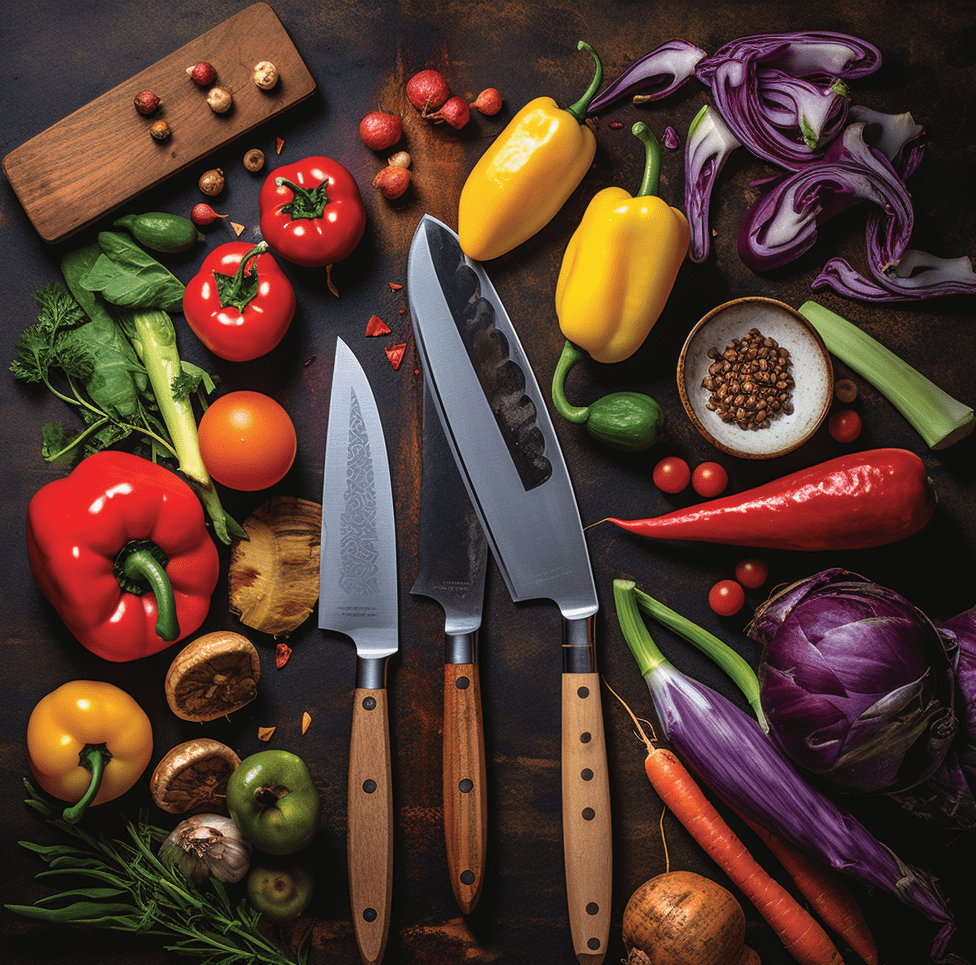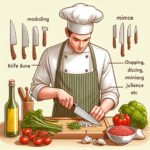The best knives for vegetable cutting are sharp, durable, and ergonomically designed. Chef’s knives and santoku knives are popular for their versatility in handling various vegetables.
Preparing vegetables can be a culinary joy or a tedious chore, largely influenced by the tools you use. A sharp, well-crafted knife turns slicing and dicing into a smooth, almost effortless process. Discerning cooks often look for knives that balance precision with comfort, resulting in consistent cuts and safe handling.
Among the plethora of kitchen tools, a reliable chef’s knife stands out for its ability to tackle a multitude of tasks, from mincing herbs to chopping carrots. Similarly, a santoku knife, with its distinctive granton edge, excels in minimizing friction and sticking, especially handy for slicing wet vegetables like tomatoes or cucumbers. Opting for these types of knives can elevate your meal prep experience, ensuring every chop is a cut above the ordinary.
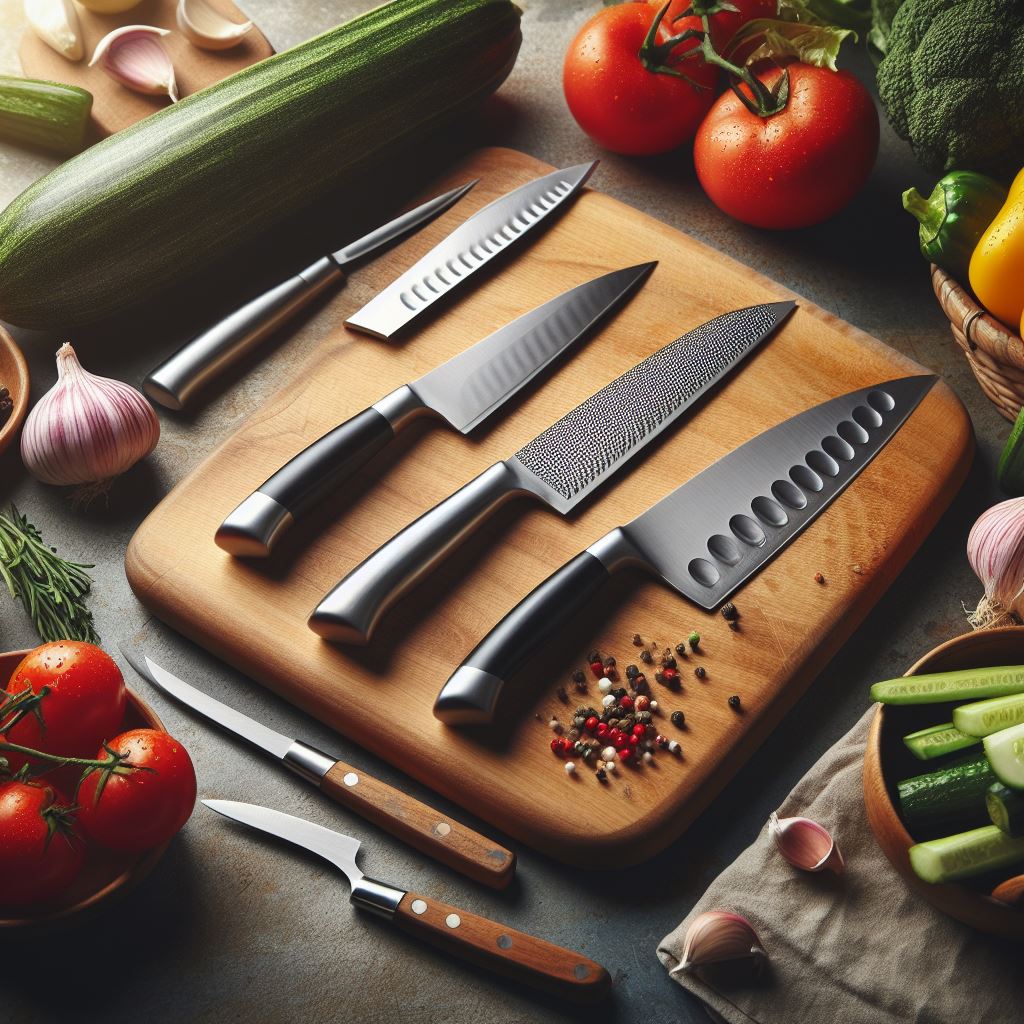
Introduction To Vegetable Cutting
Cooking is both an art and a science, and mastering vegetable cutting is a quintessential skill that elevates this craft. Slicing, dicing, and chopping are more than mere preparatory steps; they influence the texture, flavor, and cooking time of a dish. The secret to impeccable vegetable cutting lies not just in the technique, but also in the tools used – the knife. A proper knife does more than simply cut; it ensures safety, efficiency, and culinary precision.
Understanding The Importance Of The Right Knife
When it comes to vegetable preparation, the right knife can make all the difference. Each type of knife is engineered with specific tasks in mind, and using the correct one can enhance control and precision. A well-selected knife minimizes waste, preserves the integrity of delicate ingredients, and reduces preparation time. For chefs and home cooks alike, investing in quality knives means investing in their culinary creations.
Different Types Of Vegetables And Their Cutting Requirements
Vegetables come in a myriad of shapes, sizes, and textures, each demanding a different cutting approach. Curating a diverse knife collection is essential to navigate these requirements effortlessly. The firmness and structure of a vegetable dictate the knife needed for optimal cutting. For instance:
- Leafy greens like lettuce or kale may require a sharp, thin-bladed knife to cleanly slice without bruising.
- Root vegetables such as carrots and potatoes need a sturdy knife that can handle dense textures without causing strain.
- Soft vegetables like tomatoes benefit from a serrated knife that can slice through the skin without crushing.
Choosing the right knife based on these factors can transform the preparation process, enhancing not only the ease of cutting but also the overall quality of the dish being prepared.

Characteristics Of The Best Vegetable Knives
Welcome to the heart of culinary performance – choosing the quintessential tool for efficient vegetable cutting. Meticulously crafted and keenly mastered, the right knife can transform the tedious chore of slicing and dicing into a quick, enjoyable, and safe culinary exercise. Unearthing the perfect vegetable knife boils down to identifying the following characteristics designed to meet both the culinary enthusiast’s and the professional chef’s demanding standards.
Blade Material And Sharpness
The paramount aspect of any vegetable knife is the quality of the blade, which plays a central role in precision and longevity. A knife’s prowess in cutting is directly linked to two key factors: material and sharpness. High-carbon stainless steel is a favored material known for its remarkable durability and resistance to corrosion. Another contender, ceramic, offers unparalleled sharpness and maintains its edge longer than most metals, though it is more brittle and susceptible to chipping. Ensuring a razor-sharp edge not only makes cutting effortless but also enhances safety, as a sharp knife is less likely to slip.
Handle Design And Grip Comfort
A knife’s handle influences control and fatigue during repetitive tasks. The best vegetable knives feature ergonomic handles that offer a comfortable grip, irrespective of hand size. Materials such as silicone or polymer provide non-slip surfaces, even when wet. The design of the handle should feel natural in your hands, promoting ease of use and reducing strain on your wrists.
Knife Length And Weight Balance
Length and balance are the subtle nuances that influence a knife’s agility and overall performance. Ideal vegetable knives range between 6 to 8 inches, providing ample blade to handle various vegetables while retaining precision. The weight balance between the handle and the blade is equally vital, as it impacts the user’s control and comfort level. A well-balanced knife feels like an extension of the hand, making chopping and slicing tasks feel nearly effortless.
Maintenance And Ease Of Cleaning
Commitment to knife care directly affects its lifespan and function. Vegetable knives should be easy to clean, preferably dishwasher-safe, though hand washing and thorough drying are recommended to maintain sharpness and prevent damage. Look for knives with minimal crevices where food particles can accumulate. Additionally, knives that require less frequent sharpening or come with sharpening tools offer ongoing peak performance with minimal maintenance required.
Top Knives For Precision Vegetable Cutting
Whether you’re dicing tomatoes, chiffonading basil, or julienning carrots, precision in vegetable cutting is key to elevating your culinary creations. The right knife not only makes the task easier but also ensures your veggies are cut uniformly, vital for cooking evenly and presenting your dishes beautifully. Let’s delve into the top knives that bring precision to your chopping board.
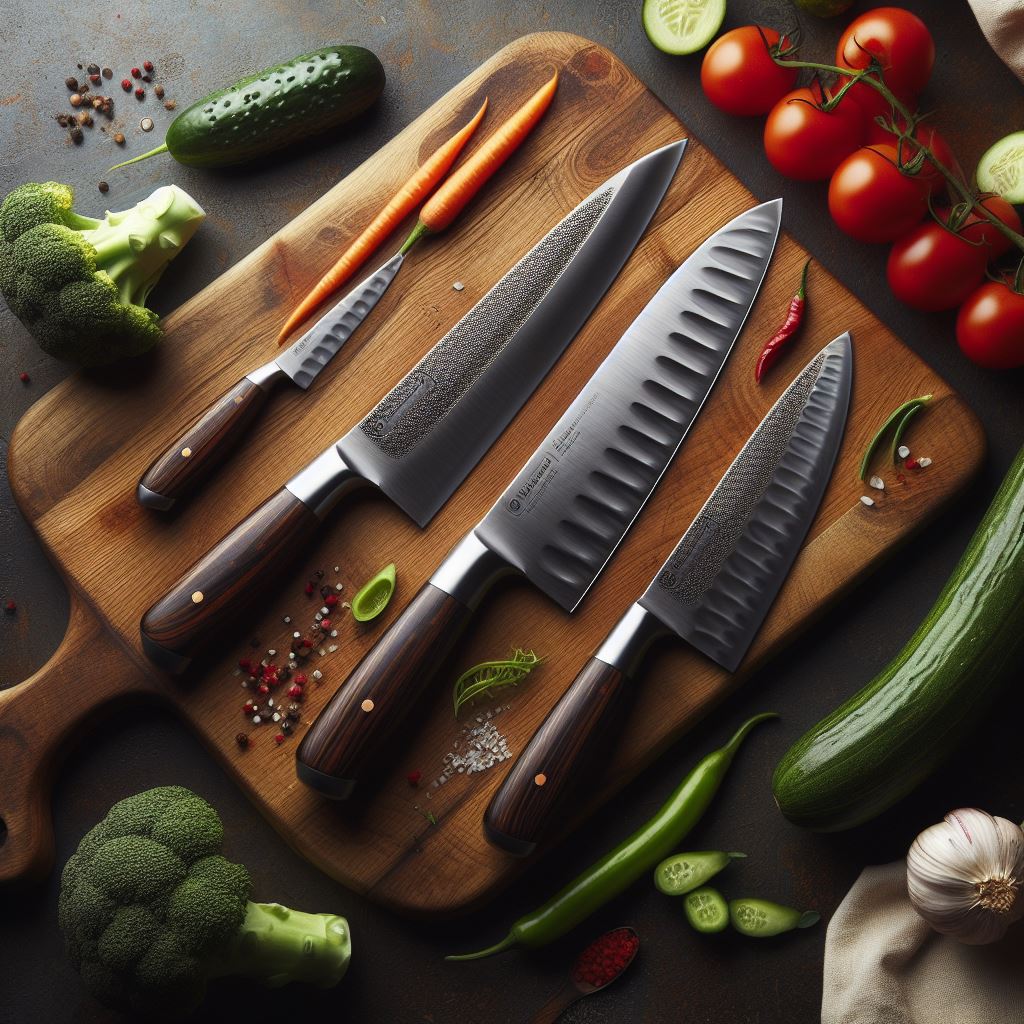
A Chef’s Knife is, without a doubt, a kitchen powerhouse. Typically 8 to 10 inches long, this knife offers versatility for most cutting tasks. Here are key points on why it’s an all-purpose hero:
- Blade Design: Its broad and tapered design allows for easy rocking and thus, precise chopping and mincing.
- Handle Comfort: Ergonomically designed for a firm grip, reducing fatigue during prolonged use.
- Edge Retention: High-quality chef knives maintain sharp edges for consistent precision.
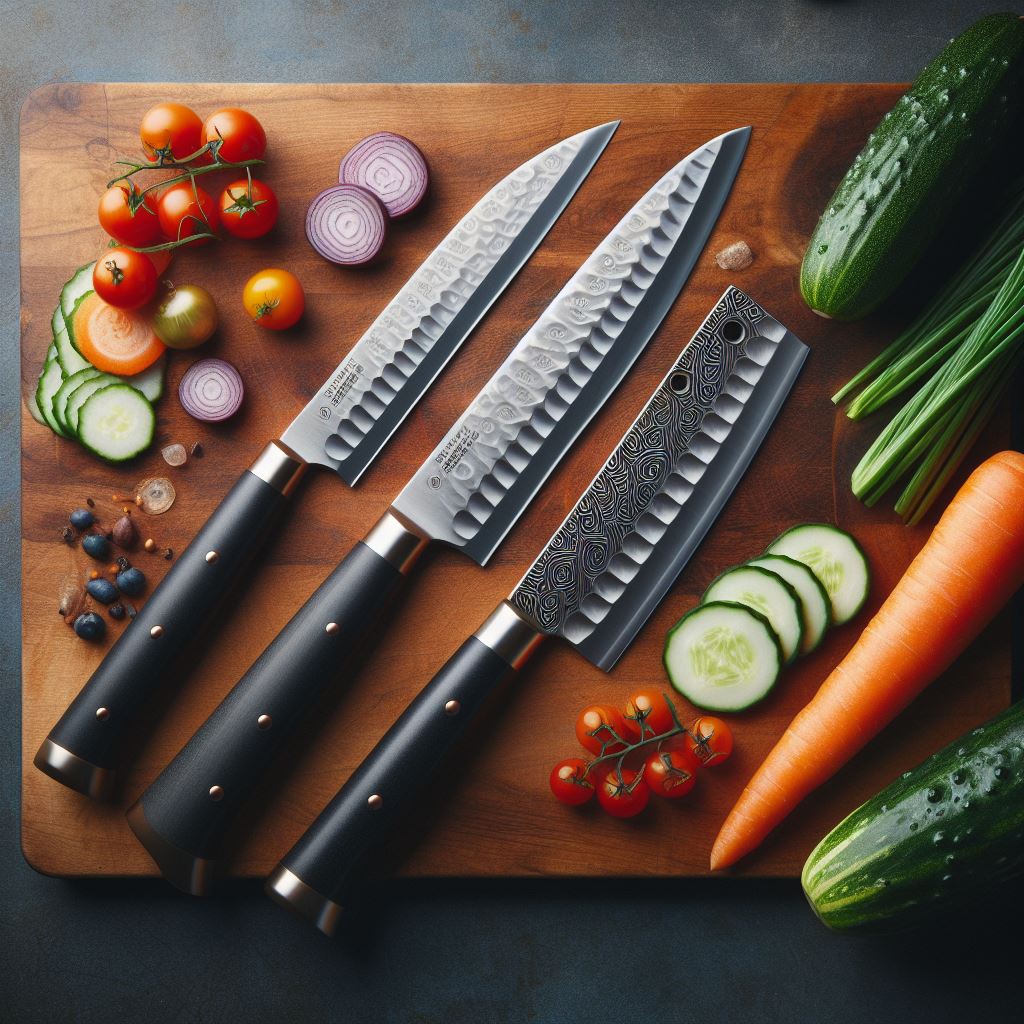
The Santoku Knife, with its distinctive ‘sheep’s foot’ tip, is a versatile Japanese blade. Perfect for slicing, dicing, and chopping, its special features include:
- Granton Edge: The scalloped blade helps prevent vegetables from sticking.
- Balanced Weight: Ideal for users seeking a lighter alternative to the chef’s knife.
- Perfect Size: Typically ranging from 5 to 7 inches, granting precise control.
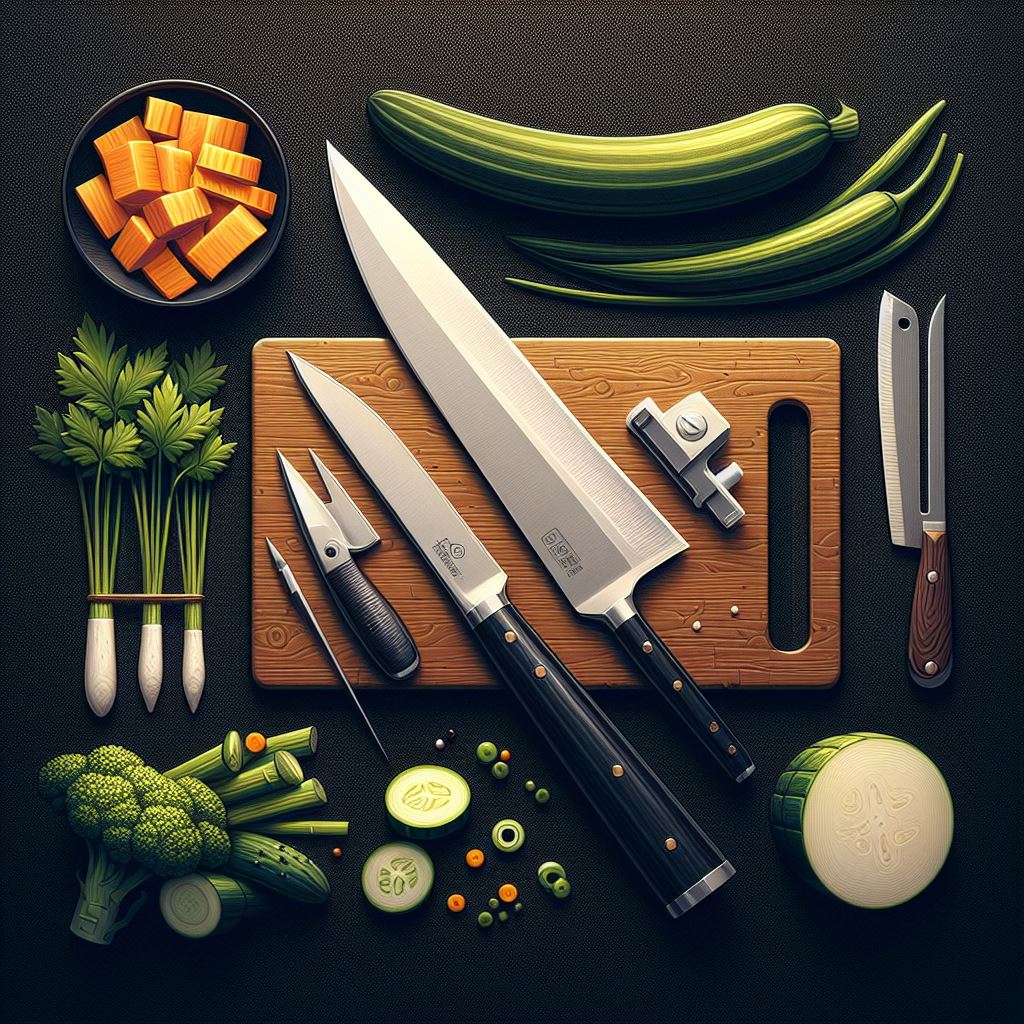
Designed exclusively for vegetal tasks, the Nakiri Knife boasts a straight blade perfect for a clean cut through vegetables. Advantages include:
| Feature | Benefit |
|---|---|
| Straight Edge | Ideal for chopping without the need for a push-and-pull motion. |
| Rectangular Blade | Allows easy chopping of vegetables from leafy greens to hefty squashes. |
| Uniform Thickness | Delivers even slices ideal for salads and gratins. |
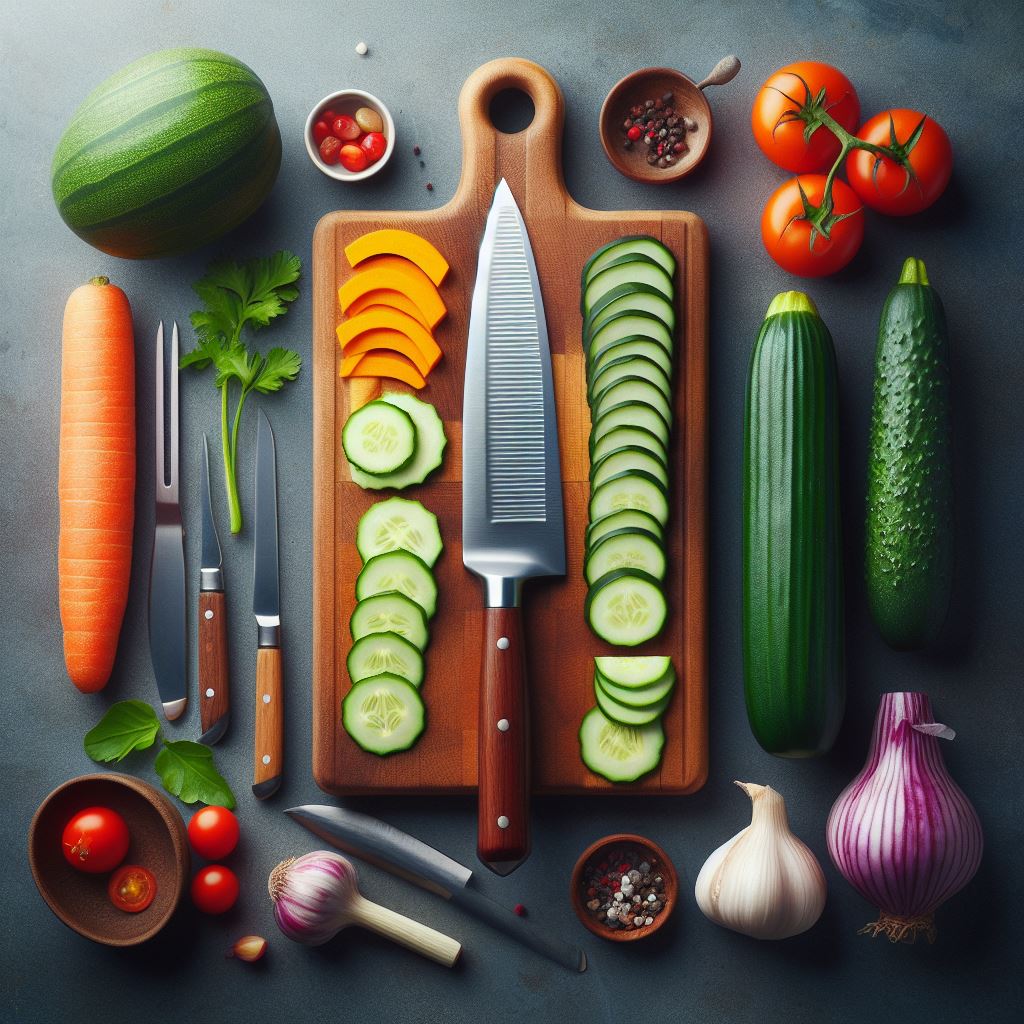
When detail is paramount and delicacy is non-negotiable, the Paring Knife steps up to the plate. Its small size – usually 3 to 4 inches in blade length – allows for intricate cuts that larger knives can’t manage. Notable features include:
- Pointed Tip: Excels at jobs like deveining shrimp or removing seeds from jalapeños.
- Sharp Edge: Ensures clean cuts on even the smallest vegetables.
- Hand Control: Gives the user full control for peeling, trimming, and segmenting fruits and vegetables.
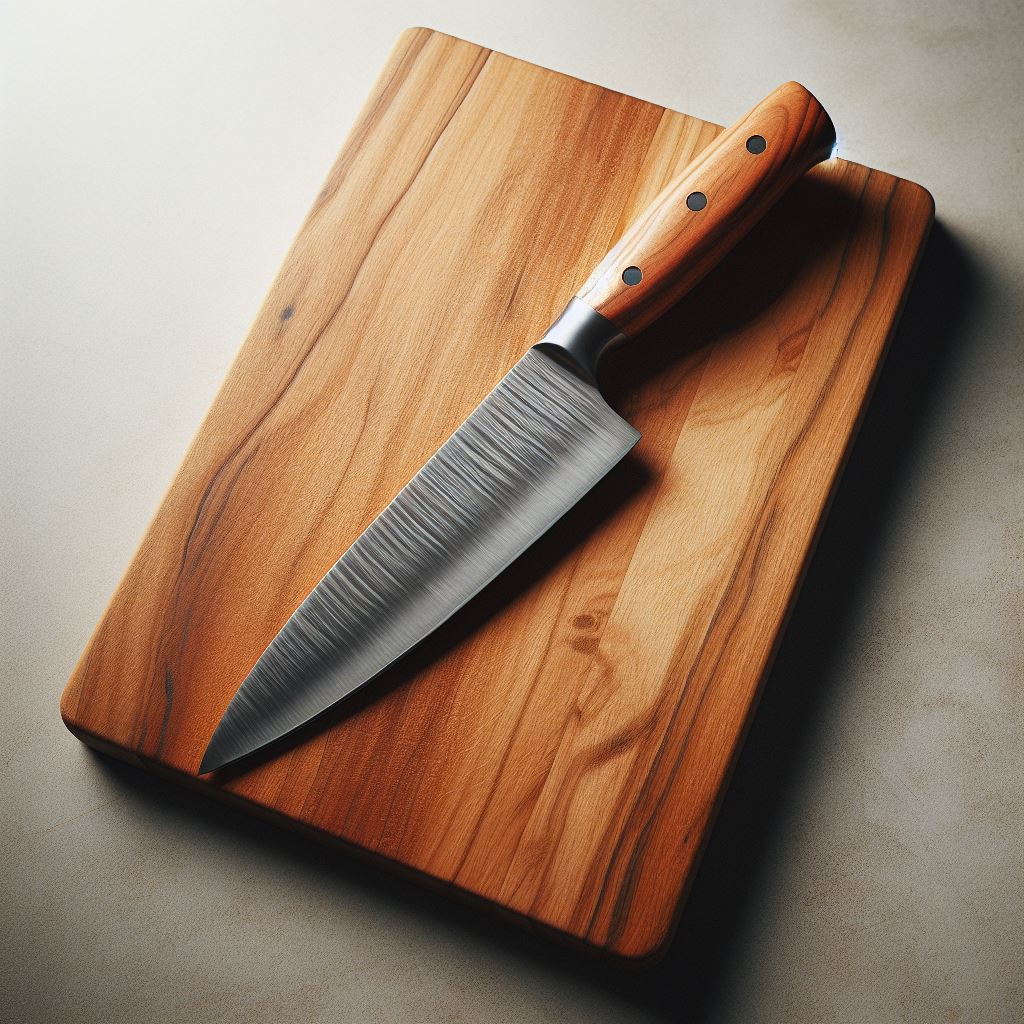
Expert Tips And Techniques For Vegetable Cutting
Welcome to the ultimate guide on Expert Tips and Techniques for Vegetable Cutting. Whether you’re a seasoned chef or a home cook looking to refine your culinary skills, mastering the art of vegetable cutting is essential. With the right knives and techniques, you can enhance the efficiency of your prep work and elevate the quality of your dishes. In this section, we’ll explore the best practices to hone your knife skills, adapt your approach to different vegetable textures, and maintain safety to prevent injuries.
Honing Your Knife Skills For Efficiency
Sharp knives are the cornerstone of efficient vegetable cutting. A properly honed blade reduces prep time and effort, ensuring a swift and precise cut. Begin with a chef’s knife for versatility, or opt for a santoku if you prefer a lighter option.
- Maintain a sharp edge with regular honing and periodic sharpening.
- Use a cutting board that is stable and provides ample space.
- Practice the “claw grip” to hold food securely and tuck fingers away.
- Master the rock-chop method for herbs and the push-cut technique for firmer vegetables.
Remember, consistent practice is key to building speed and precision.
Cutting Techniques For Different Vegetable Textures
Different vegetables require custom approaches to cutting due to their unique textures and shapes. Understanding the characteristics of each can improve your cutting technique and minimize waste.
| Vegetable Type | Texture | Recommended Cutting Technique |
|---|---|---|
| Leafy Greens | Soft | Chiffonade for thin, ribbon-like strips |
| Root Vegetables | Firm | Dicing for even cooking |
| Tomatoes | Delicate Skin | Serrated knife for clean slices |
Adapting your cutting technique to match the vegetable’s texture ensures even cooking and optimal presentation.
Safety Tips To Prevent Injuries
While efficiency is important, safety should always take precedence in the kitchen. Preventing injuries starts with the right habits and protective measures:
- Always use knives that are sharp to minimize exertion.
- Keep fingers tucked away using the claw grip technique.
- Secure your cutting board with a damp cloth underneath to prevent slippage.
- Store knives in a knife block or on a magnetic strip away from casual reach.
- If a knife falls, let it go; never attempt to catch a falling blade.
- Take your time—rushing increases the likelihood of mistakes and injuries.
Consistent attention to these safety practices will help create a secure cooking environment.
Caring For Your Vegetable Cutting Knives
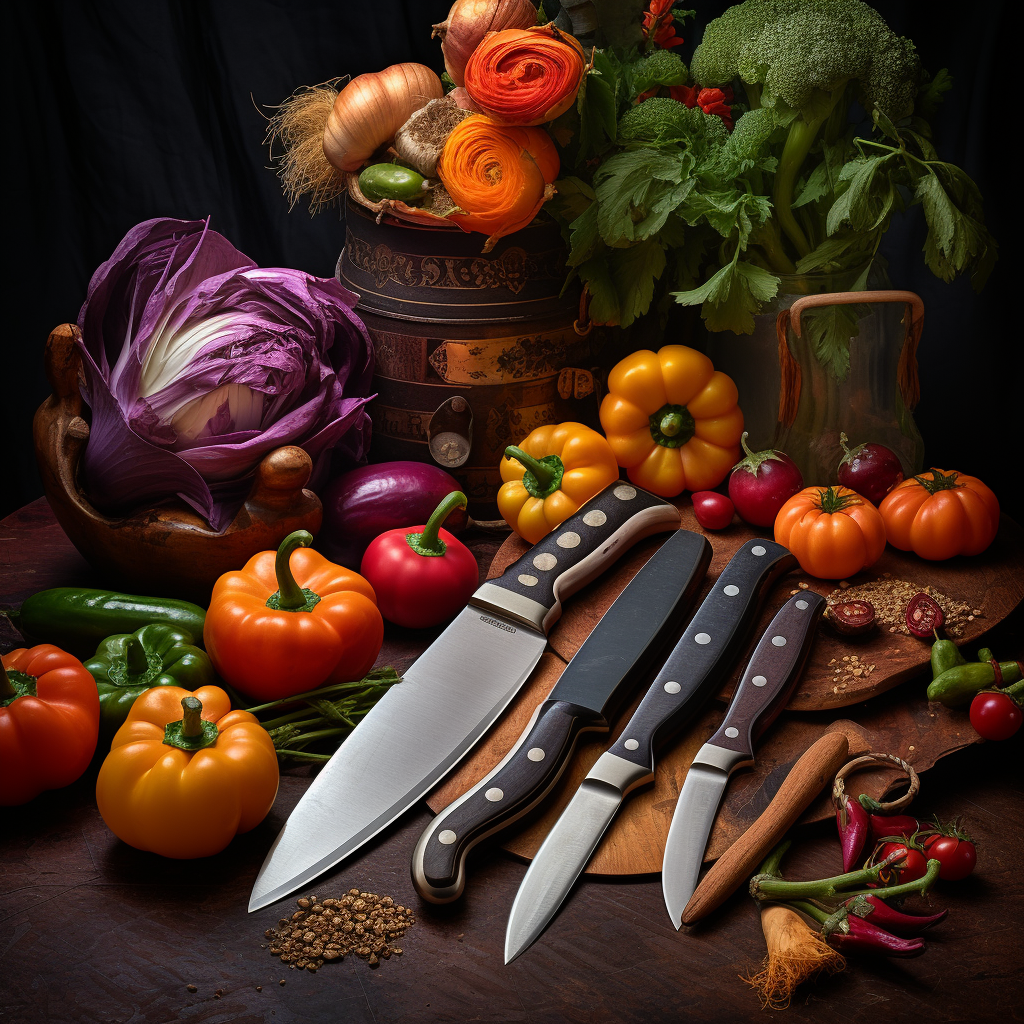
Nothing beats the satisfaction of neatly sliced vegetables, whether for a vibrant salad or a hearty stew. The secret to effortless chopping and precise cuts lies in your kitchen MVPs – your knives. Proper knife care is paramount to maintaining the peak performance of your vegetable cutting tools. This section will guide you through the best practices for extending the life and efficiency of your knives.
Proper Cleaning And Storage
Maintaining your knives starts right after they’ve done their job. Clean your knives immediately after use with warm, soapy water, and dry thoroughly to prevent rust or corrosion. Avoid dishwashers as they can dull knife blades. For storage, consider a knife block or magnetic strip over loose placement in drawers to prevent blades from getting nicked.
- Wash by hand with a non-abrasive sponge.
- Dry immediately to avoid water marks.
- Store safely to preserve edge integrity.
Sharpening Your Knives Regularly
A sharp knife is a chef’s best friend, especially when it comes to vegetables that require precision. Use a whetstone or honing rod to keep the edge aligned and the blade sharp. Sharpening depends on frequency of use but aiming for every two months keeps a good edge.
- Determine the blade’s current sharpness.
- Use appropriate tools for sharpening and honing.
- Maintain a consistent angle for even sharpening.
When To Consider Knife Replacement Or Professional Sharpening
Over time, even the best knives may require more than home maintenance. Detect signs of wear like chipping, or if sharpening doesn’t restore its performance, consider a professional service. A professional can also advise when it’s time to invest in new knives, ensuring you’re always equipped for perfect vegetable cutting.
| Sign of Wear | Action |
|---|---|
| Dull blade after sharpening | Professional sharpening |
| Chips or bends in blade | Evaluate for replacement |
| Loose handle or rivets | Professional repair or replace |
Conclusion
Selecting the right knife can elevate your vegetable preparation to new heights. Sharp, comfortable, and versatile options abound. Remember, the right tool not only speeds up chopping but also ensures safety. Embrace the art of culinary prep with a top-notch vegetable knife chosen from our recommendations.
Happy slicing!
Frequently Asked Questions Of Best Knives For Vegetable Cutting
What Are The Top-rated Vegetable Knives?
Popular knives for vegetable cutting include chef’s knives, santoku knives, and nakiri knives. These options are known for their sharpness, precision, and ergonomic handles, making vegetable cutting efficient and comfortable.
How To Choose A Vegetable Cutting Knife?
When selecting a vegetable cutting knife, consider blade sharpness, handle comfort, durability, and knife balance. A stainless steel blade is typically a good choice due to its longevity and ease of maintenance.
Can A Paring Knife Cut Vegetables?
Yes, a paring knife is excellent for small or intricate tasks like peeling, trimming, or finely chopping small vegetables. Its small size allows for better control during precision work.
What Makes A Knife Good For Slicing Veggies?
A knife suitable for slicing vegetables should have a sharp, thin blade for clean cuts, a comfortable handle for control, and be made of a material that maintains sharpness, like high-carbon stainless steel.

